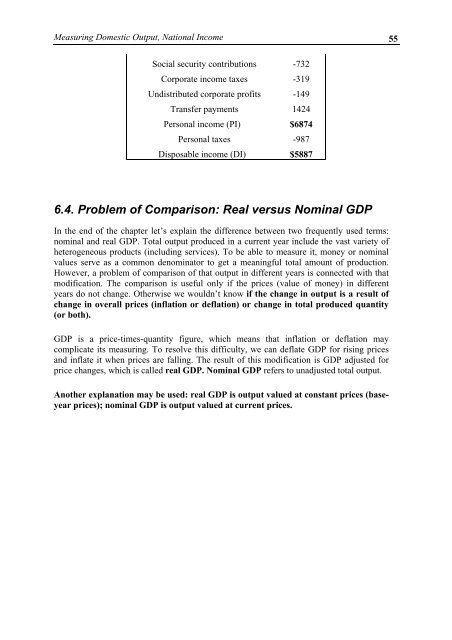MacroeconomicsI_working_version (1)
You also want an ePaper? Increase the reach of your titles
YUMPU automatically turns print PDFs into web optimized ePapers that Google loves.
Measuring Domestic Output, National Income 55<br />
Social security contributions -732<br />
Corporate income taxes -319<br />
Undistributed corporate profits -149<br />
Transfer payments 1424<br />
Personal income (PI) $6874<br />
Personal taxes -987<br />
Disposable income (DI) $5887<br />
6.4. Problem of Comparison: Real versus Nominal GDP<br />
In the end of the chapter let’s explain the difference between two frequently used terms:<br />
nominal and real GDP. Total output produced in a current year include the vast variety of<br />
heterogeneous products (including services). To be able to measure it, money or nominal<br />
values serve as a common denominator to get a meaningful total amount of production.<br />
However, a problem of comparison of that output in different years is connected with that<br />
modification. The comparison is useful only if the prices (value of money) in different<br />
years do not change. Otherwise we wouldn’t know if the change in output is a result of<br />
change in overall prices (inflation or deflation) or change in total produced quantity<br />
(or both).<br />
GDP is a price-times-quantity figure, which means that inflation or deflation may<br />
complicate its measuring. To resolve this difficulty, we can deflate GDP for rising prices<br />
and inflate it when prices are falling. The result of this modification is GDP adjusted for<br />
price changes, which is called real GDP. Nominal GDP refers to unadjusted total output.<br />
Another explanation may be used: real GDP is output valued at constant prices (baseyear<br />
prices); nominal GDP is output valued at current prices.




